What is an endangered animal?
- Published
- comments
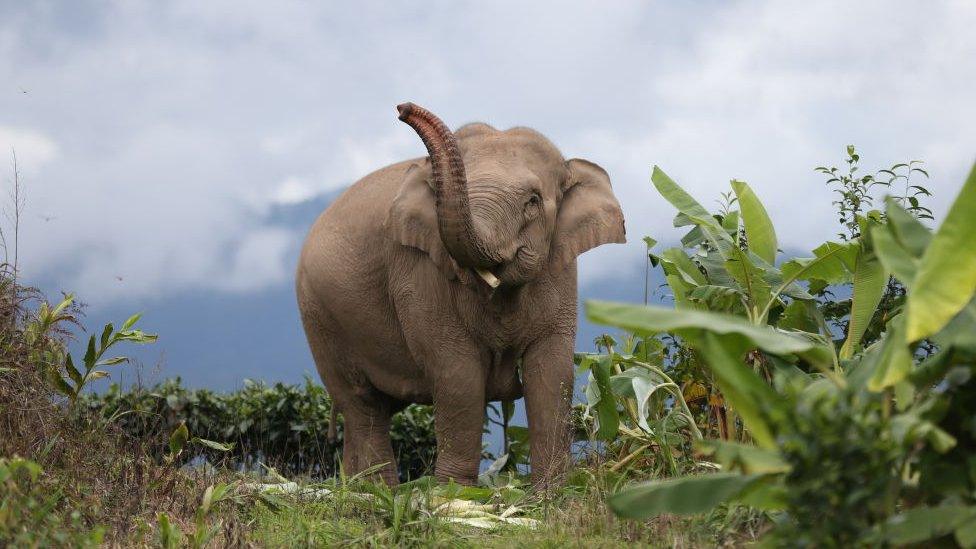
There is a lot of focus right now on looking after the planet and tackling climate change, to protect wildlife and their habitats as well as preserve the huge variety of trees and plants which are important to the environment.
You may have heard different words being used to describe animals and plants whose populations are under threat such as vulnerable, endangered or critically endangered.
But have you ever wondered what all these words mean and what the difference between them is?
Keep reading to find out and to learn what's being done to help protect species at risk.
What are the main risks to animals and plants?
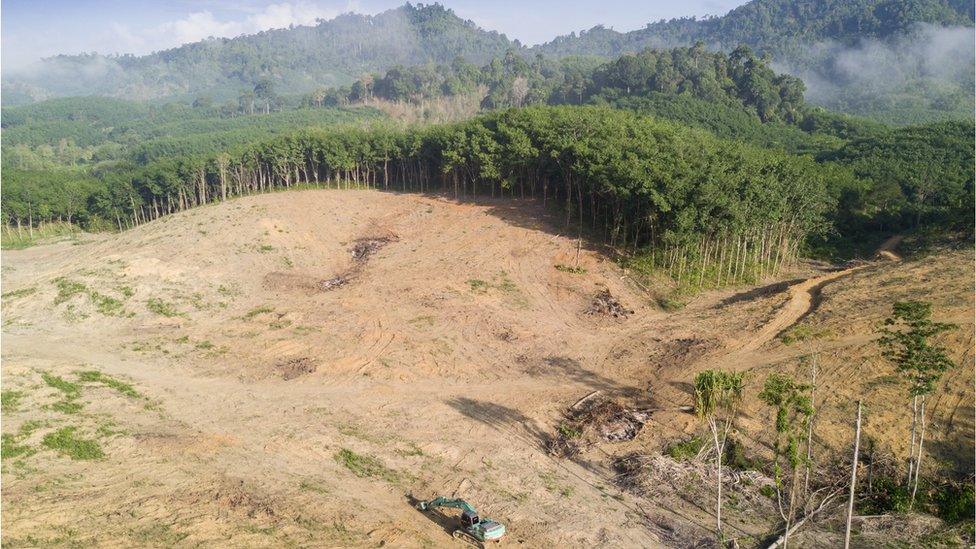
Clearing rain forest jungle for oil palm plantations such as here in Borneo is a big worry for climate scientists and conservationists
Scientists say many of the changes to the Earth's climate are caused by human activity - this means things that humans are doing.
Activities like deforestation when forests are cleared for farmland, urbanisation and the expansion of roads and cities, hunting of species, overfishing and water pollution all have a negative impact on animal and plant species.
Climate change is also a big threat.
Every breath of air we take, every mouthful of food we eat, comes from the natural world ultimately, and if we damage it we damage ourselves.
What is conservation and why is it important?
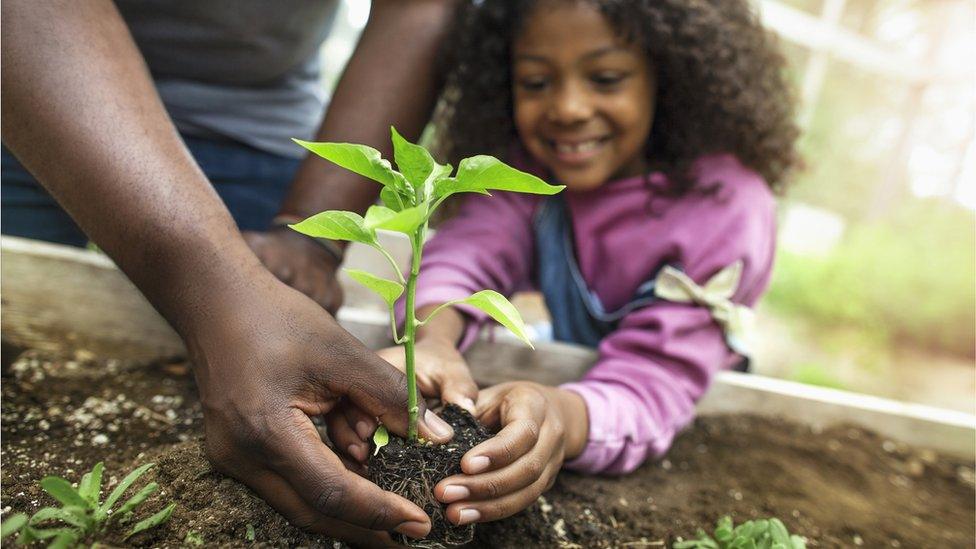
Planting wildlife-friendly seedlings and protecting trees and plants is a great way of helping with conservation
Nature conservation means protecting our environment and the wildlife and plants that live in it for future generations.
This includes everything from protecting species from extinction, maintaining and restoring habitats and preserving natural resources such as water, wood or fuel.
There are lots of ways that we can get involved in conservation and start helping the planet such as recycling to conserve natural resources and landfill space, planting trees to help clean the air and saving water.
Protecting nature: What is the 'red list'?
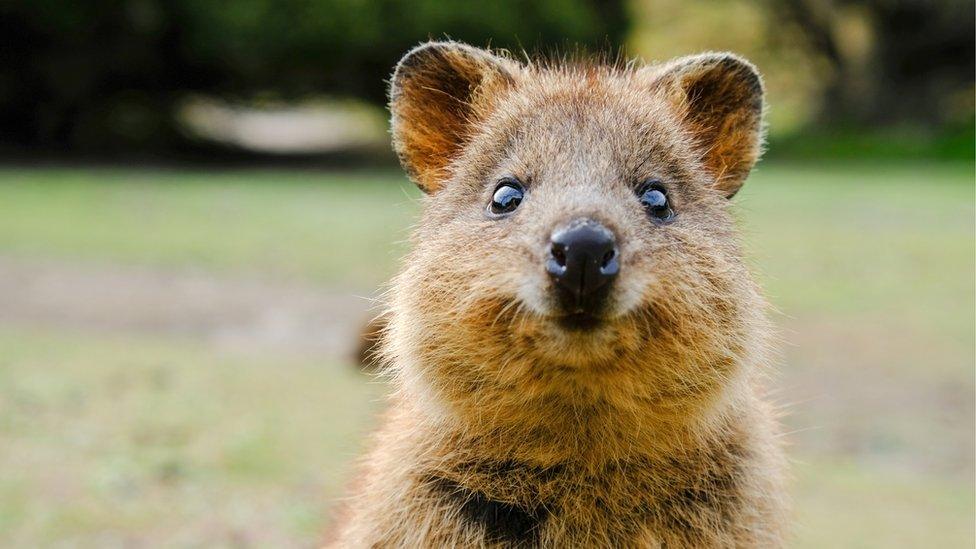
Quokkas - which are often described as the world's happiest animal - are classed as 'vulnerable' according to the IUCN's red list
The International Union for Conservation of Nature (IUCN) is the world's largest global environmental network.
It brings together governments, organisations and experts from around the world in a joint effort to conserve nature and to make the planet more sustainable.
Every year, it produces a red list which looks at how low, or high, the risk of global extinction is to thousands of animal, fungus and plant species.
1 Not Evaluated
2 Data Deficient
3 Least Concern
4 Near Threatened
5 Vulnerable
6 Endangered
7 Critically Endangered
8 Extinct in the Wild
9 Extinct
What do the words mean?
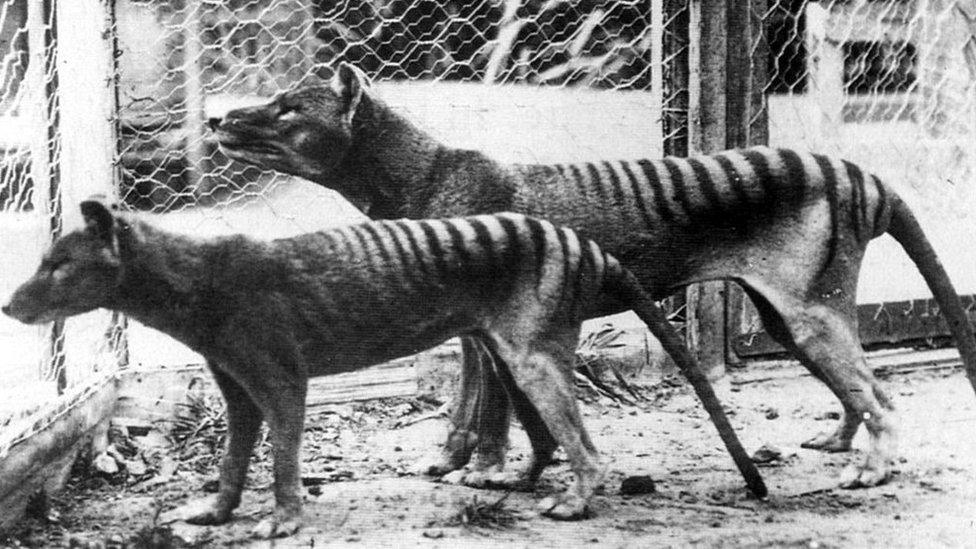
This is one of the few photos that exist which shows the Tasmanian tiger, which lived in and around Australia, and became extinct around 90 years ago
The main worry for scientists comes when a species is found to be in one of the following IUCN categories:
Near Threatened - A species that is very likely to soon become 'vulnerable', 'endangered' or 'critically endangered' such as the European otter, plains zebra and the grey long-eared bat.
Vulnerable - At a high risk of extinction - or disappearing - from the wild. Examples include koala bears, the giant panda and the snow leopard.
Endangered - At a very high risk of extinction in the wild. The Asian elephant, blue whale and red panda are among some of the species that are in this list.
Critically Endangered - At an extremely high risk of extinction in the wild. The IUCN has listed black rhinos, many species of orangutan and Sumatran tiger as having fallen into this category.
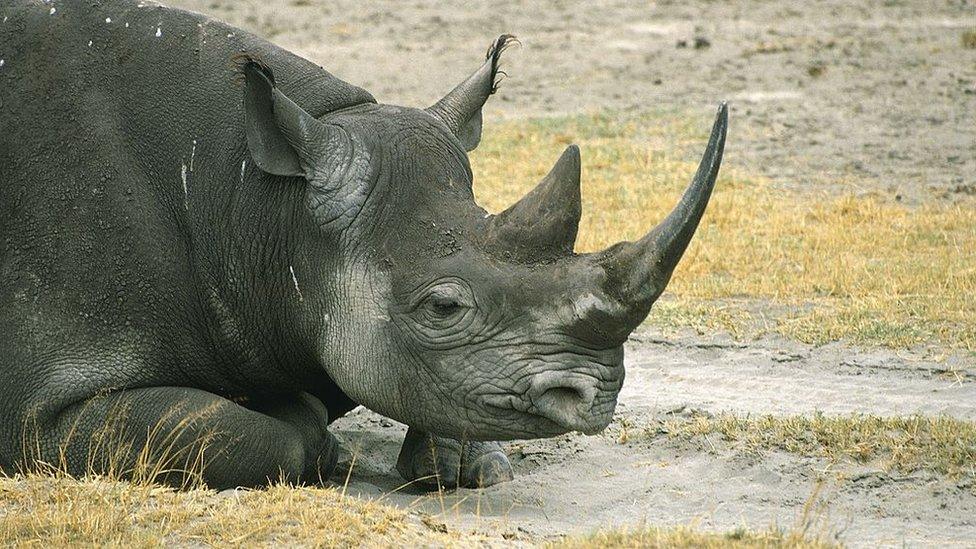
Critically endangered black rhinos are the smaller of the two African rhino species
Extinct in the Wild - Hasn't been seen in the wild and is only known to survive for example in captivity or cultivation. Examples include the Guam kingfisher, Wyoming toad and Hawaiian crow.
Extinct - When a species does not exist anywhere and has disappeared from the planet altogether. Famous examples include the dodo, quagga and Tasmanian tiger.
Species are monitored wherever possible and they can move up or down categories depending on whether their population is decreasing or growing.
The IUCN say that in total there are more than 40,000 species that are currently threatened with extinction.
What is being done to help?

CITES also monitors the trade and wild populations of plants, including certain species of coral, cacti and orchids
There's a lot of conservation work being done in countries around the world on many levels.
It's being done by volunteers and local communities, conservationists and climate activists such as Sir David Attenborough and Greta Thunberg, national charities such as the RSPB and the Woodland Trust here in the UK, as well as global charities such as the WWF.
Global governments are also involved with keeping up conservation efforts.
CITES stands for the Convention on International Trade in Endangered Species of Wild Fauna and Flora.
It is a voluntary international agreement set up nearly 50 years ago between governments - including the UK's - to regulate or ban international trade in species under threat.
For example, CITES banned the international buying and selling of elephant ivory in 1989, which is used for jewellery and medicine in some countries.
Representatives of CITES nations meet every three years at a Conference to review progress and if necessary to change the lists of protected species.
Animals making a comeback

At one point, there was thought to only be 2,000 sea otters remaining on the planet, although numbers have now increased thanks to conservation efforts and an international ban on hunting the animals
Thanks to conservation efforts, there are plenty of species that have been saved from the brink of extinction.
Some examples include:
Indian rhinos were once common across the northern part of the Indian sub-continent, but by 1975, there were only 600 left. Dedicated conservation has seen their numbers increase to around 3,700.
After 10 years of conservation work in Indonesia's Sebangau National Park - which holds the largest wild orangutan population in the world - researchers found numbers had risen by 7 percent since 2007, with over 6,000 orangutans recently counted.
Here in the UK, after a decade of conservation work, one of the most endangered wildflowers in Europe, the fen orchid is starting to bounce back. The plants are legally protected, and the dunes and fens where it grows, have been restored. More than 4,000 fen orchids can now be found across the country.
- Published10 August 2022

- Published1 March 2022

- Published21 November 2019
